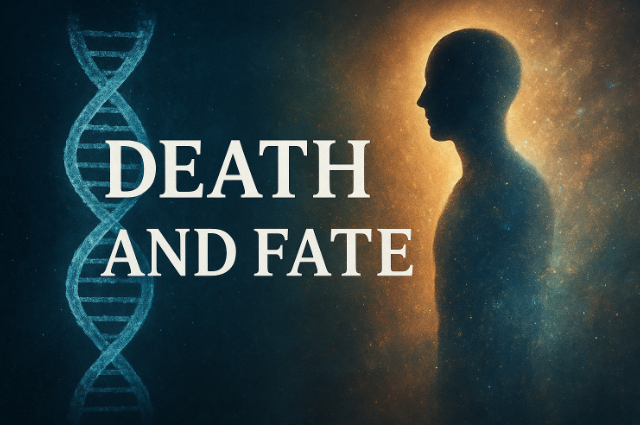
Death is not the indication of the end of life; it’s just the biological process of detaching the soul from the body. Death eventually and inevitably occurs in all organisms. The most common factor for death is aging and cardiovascular disease, which is a disease that affects the heart or blood vessels. A study of gerontology known as biogerontology desk to eliminate death by natural aging in humans, often through the application of natural processes found in certain organisms. However, as humans do not have the means to apply this to themselves, they have to use other ways to reach the maximum lifespan for a human, often through lifestyle changes, such as calorie reduction, dieting, and exercise. Determining when a person has died has proven difficult. Initially, death was defined as occurring when breathing and the heartbeat ceased, a status still known as clinical death.
Senescence
Senescence is the scenario that depicts when a living being survives all calamities but eventually faces death due to the causes of aging. Almost all animals that survive external hazards to their biological functioning eventually die from biological aging, known in life sciences as senescence. A well-known example is saints. As they follow some practices for surviving.
And senescence has been divided into three categories:
- Replicative senescence
- Oncogene-induced senescence
- Stress-induced senescence
Replicative senescence
Replicative senescence is a fundamental feature of somatic cells, except for most tumour cells and possibly certain stem cells. Replicative senescence may have evolved to curtail tumorogenesis, but may also have the unselected effect of contributing to age-related pathologies, including cancer.
Oncogene-induced senescence
Oncogene-induced senescence is a powerful tumour suppressive mechanism, characterised by cell cycle arrest and a secretory phenotype. The discovery and characterization of the senescence phenotype, including extrinsic impacts on the microenvironment and engagement of the immune response
Stress-induced senescence
Cells entering a state of senescence undergo a permanent cell cycle arrest, accompanied by a set of functional and morphological changes. Senescence of cells occurs following an extended period of proliferation in culture or response to various physiologic stresses.
Death vs Fate
Human beings are composed of physical and astral, and spiritual bodies, and these three bodies are interrelated and interwoven. And the soul is located 10 centimetres inside the forehead, which controls all these three bodies.
Afterlife
Our death in the physical world means the separation of our astral and spiritual bodies from the physical body. And these two bodies stay alive in the afterworld. We repeat the cycle of birth and death, and thus we live eternally. We cannot expect an instant improvement in our nature. In the afterworld, we live as we did in the physical world. Once we get into the afterworld, we are supposed to engage in training to mainly get rid of our attachment to our past life. When we complete this training, we will again take birth in the physical world. This is so-called reincarnation. In other cases, like we neglect our training or hold too much attachment to the physical world, we might he forced to materialize in the physical world with a different appearance, like an animal, this is called transmigration. We will need to continue training. Once the training is done, we get back our original human form. God designed the reincarnation and transmigration system to train human souls so that they can eventually restore their original ability and character as God’s children.
Most of us share the belief that we are all doomed to age and die, but there’s growing evidence that the aging that kills most of us may be curable. And reversible. If this happens, it will change everything.
The desire for immortality has been around for millennia, the philosopher's stone, Faust's endless searches for mythical fountains of youth, and the snake oil of all varieties. A few years ago, I began researching a book for National Geographic that asked this question: what if real and solid science could, at last. Had we reached such a point in human history, given the rapid advances in genomics, genetics, molecular biology, big data, nanotechnology, and machine learning? After all, during the past 120 years, we have nearly doubled the average life span of America from our mid-40s in 1900 to nearly 80in 2017. But now we are facing a new problem as we march into our extended lives. We may be living longer, but not necessarily better. Could we create a world where life spans not only increase, but health spans do?
The desire to love is built into our DNA; who doesn’t want to love long time, vibrant and sharp-witted, wiser but no longer older. Other situations and scenarios in science fiction remain, for the time being at least, out of our reach. But science and technology have certainly helped us improve our longevity and quality of life along our journey to discovering the ultimate travel destination of oblivion.
. . .
References:
